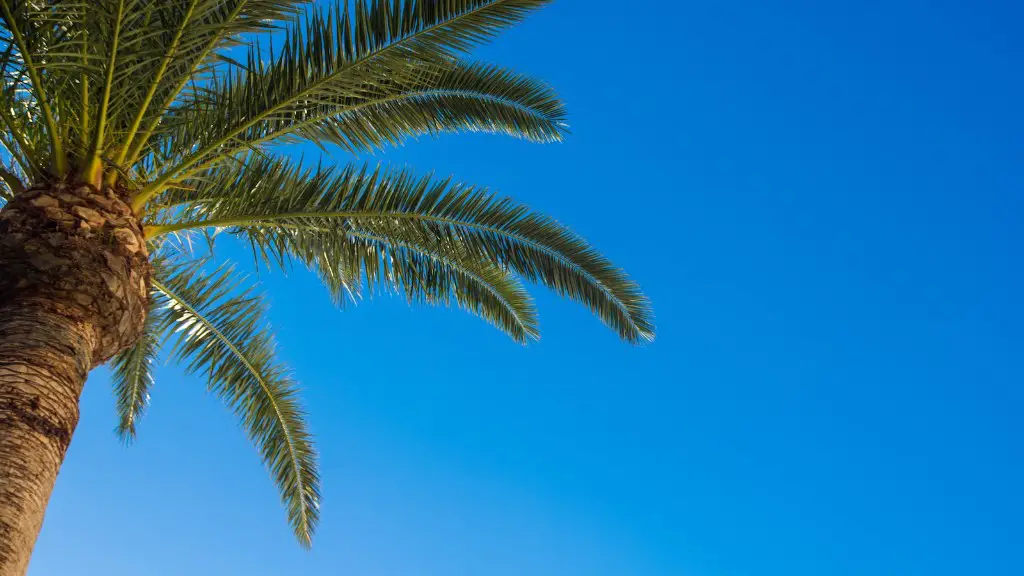Apple Tree Varieties
Apple trees come in countless varieties, making it difficult to identify a specific type without comparison. It’s important to start by considering the region in which the tree flourishes and how it has been cultivated. Apple trees are divided into two main types – ‘Culinary’ and ‘Dessert’. Apple orchards may feature a combination of both. Some have a final step of ‘Varietal’ – ‘It’s a specialised grouping of distinct apple types that differentiate based on flavor, size and origin.
Climate and Soil
The location and soil play a key role in what type of apple tree you’re likely to have. Apple trees grow best in climates which are cooler in summer and milder in winter. The soil must be light, healthy, and well-drained, ideally with a pH of 6 or higher. It’s also important to ensure adequate water and sunshine, as apple trees have a thirst for both.
Determining the Type of Apple Tree
Once the climate and soil are confirmed, the next step is to narrow down the variety of apple tree. Visually examine the tree for clues like the shape of the leaves and the fruit’s skin. Additionally, apples can be grouped according to their various colors, textures and tastes. Lastly, consider the type of stems and trunk – these can also provide valuable information about the species of apple tree.
Apple Bearing Trees
Bearing apple trees are the most common type. They are trees that produce edible fruit, which can be identified by their distinctive shape, color and taste. Many apple bearing trees are either dessert or culinary. Dessert apples are ones that are sweeter than cooking apples and can be eaten straight off the tree. Culinary apples are more tart and robust and are better suited for cooking or baking.
Dwarf Apple Trees
Dwarf trees are smaller apple trees that are typically self-fertile, meaning they can produce fruit even if there aren’t any other apple trees nearby. Since these trees are much smaller than bearing apple trees, they tend to be easier to maintain and can produce fruit sooner. They usually grow to a maximum of 8 feet tall, making them the ideal choice for small gardens.
Semi-Dwarf Apple Trees
Semi-dwarf apple trees are essentially a hybrid of regular apple trees and dwarf apple trees. They are smaller than regular trees, typically reaching no more than 12 feet tall, yet still capable of producing more apples than dwarf trees. Semi-dwarf apple trees tend to be more cold hardy than dwarf trees, making them a great choice for colder climates.
Heirloom Apple Trees
Heirloom apple trees are essentially antique apple tree varieties that have been handed down through generations. These trees are very unique in terms of their taste, texture and flavor, as they were selected to be grown in a particular climate and environment. Some of the most popular heirloom varieties include the Winesap, the Cox Orange Pippin and the Northern Spy.
Choosing the Best Apple Tree
When it comes to selecting an apple tree for your garden or orchard, it’s important to consider both the climate and the type of tree. There are a variety of apple tree varieties to choose from, and each one has its own advantages. Heirloom apple trees are ideal for those looking for a unique flavor, while bearing and semi-dwarf trees are great for those who want larger harvests. No matter what type of apple tree you choose, it’s sure to provide delicious fruit for years to come!
Pruning Apple Trees
Proper pruning of apple trees is essential for a healthy harvest. Pruning involves removing overcrowded branches, dead or damaged parts, and promoting healthy growth. Pruning should be done regularly, sourced from the base to the tips of the apples. Pruning is also important as it helps to control the size and shape of the tree, directing growth away from weak points. In addition, it can prevent disease, pests and even ensure better fruit production.
Harvesting Apple Trees
Harvesting apple trees should be done when the fruits are fully mature and ready for picking. The best way to tell if the apples are ready is to gently lift them off the tree. If the apples easily come off, then they are likely ready to harvest. Apples should be picked carefully and stored in a cool, dry place for optimal taste. Apples can also be stored in the refrigerator for up to two weeks.
Maintaining Apple Trees
Maintaining apple trees is relatively simple and can be broken down into three main steps: watering, mulching, and fertilizing. Apple trees should be watered at least once a week during dry periods or when the soil is too dry to the touch. Mulching is also important as it help to maintain soil moisture and keep weeds at bay. Finally, fertilizing should be done in the early spring to help promote healthy growth.

